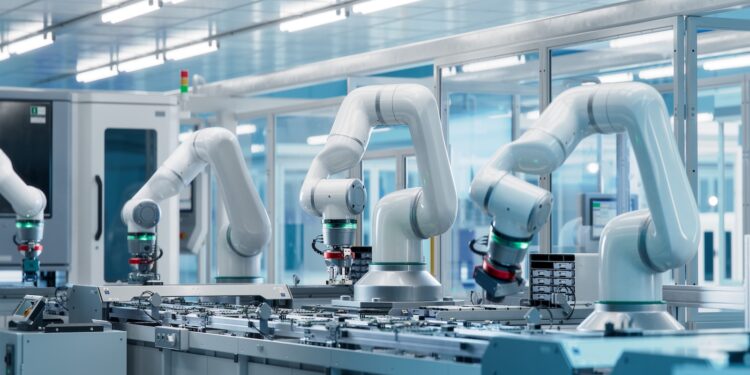Foxconn, the world's largest contract manufacturer for electronics and best known as the main producer of the iPhone, sent a clear message at Computex in Taipei: Artificial intelligence and robotics will increasingly replace traditional assembly line work. Foxconn Chairman Young Liu announced this in his keynote speech. The consequences of this development could be far-reaching – not only for the tech industry, but for entire economies.
If you've always believed that robots and AI are just theoretical concepts for the future, Foxconn is now proving otherwise. The transformation is already underway in the company's factories. And not on a small scale, but with serious consequences for jobs, production sites, and entire countries. Foxconn is thus an example of how profoundly automation will change industrial manufacturing – and how quickly it's happening.
AI now handles 80 percent of production preparation
Young Liu explained at Computex that at Foxconn, around 80 percent of the work required to prepare a new production run is now performed by AI-supported systems. In concrete terms, this means that software configures equipment faster and more efficiently than humans could. This automation reduces errors, saves time, and lowers costs in the long run.
Man and machine work together – still
Liu speaks of a combination of "bots and brains," a hybrid model in which machines take on simple and repetitive tasks, while humans solve more complex problems and monitor processes. While the goal isn't to replace all human workers—according to Liu, this has even been attempted—AI and robotics offer clear advantages in error analysis and process optimization.
Point of criticism: What happens to low-wage countries?
But Liu also points out a downside. When generative AI and robotics replace traditional assembly line work, this will primarily affect countries with low GDP. These countries often rely on simple, labor-intensive production work. When these jobs disappear, an economic gap emerges. Liu therefore calls on governments to closely monitor and respond to this change.
FoxBrain: The company's own AI model for manufacturing
Foxconn is also working on its own language model, similar to the meta-models Llama 3 and 4. The project is called "FoxBrain." This AI system is designed specifically for manufacturing and will autonomously perform certain tasks on the shop floor. No specific release date was announced, but Liu announced that the model will be open source, meaning other companies could also use and further develop it.
What this means for the iPhone
Despite all the automation, China remains a key production location for Foxconn. While Apple has begun to outsource parts of its production to India, Vietnam, and Brazil, the majority of iPhones are still built in China. This is due to the existing infrastructure and experience of the Chinese manufacturing industry—combined with comparatively low labor costs. However, if AI and robotics replace human labor, Apple could increasingly rely on other countries in the future, even those with higher labor costs. This, however, assumes that these countries can develop similar production capacities and efficiency to those of China—no easy task.
Foxconn: AI and robotics set new standards
Foxconn shows where things are headed: less manual labor, more automation. AI and robotics are profoundly transforming industrial production. For corporations, this means efficiency and savings, but for workers and economically weaker countries, it also means uncertainty. Young Liu sums it up: The question is no longer whether AI will change the labor market—but how quickly and to what extent. Those who aren't prepared today will be left behind tomorrow. (Image: Shutterstock / IM Imagery)
- OpenAI acquires Jony Ives startup for new AI devices
- Google I/O: These are the most exciting announcements of 2025
- How stolen iPhones are smuggled to China worldwide





